
For all its surface simplicity, the gin & tonic, or G&T as most of the world calls it, is a storied and romantic drink. If you get past the sizeable evils of empire building, it conjures up images of adventurous and perspiring colonials in far away places, keeping a stiff and sweaty upper lip, while wearing tropical tuxedos or pith helmets and pretending they have not been exiled for some darkness of deed or birth. The more exotic corners of Victoria’s empire always had a roguish, if not outright anything goes, feel about them, and you probably did not become second deputy lieutenant governor of central Australia because of your breeding, brilliance, spotless record or scandal free life. The “A team” likely stayed in London.
Still, in one of those oddly staffed, perhaps a little rascally, remote corners of Britannia, the G&T was born.
First let’s get the recipe out of the way. As usual this one is tailored to my own tastes. Come to think of it, why don’t you have one while you read this? Smashing! You’re at work? Even better.
G&T’s G&T
- 1.5 ounce good London dry gin, nothing that comes from a plastic jug, I like Tanqueray, Bombay Sapphire or Hendrick’s
- 3 ounces tonic water
- Garnish with lemon, lime or cucumber (I can hear some of you scream)
- Optional dash of bitters (more screams)
- Ice, ice baby
The proportions are important, most G&T’s you get have way too much tonic, you need to taste the gin and taste it well. If you don’t like gin but still feel like a long drink you can opt for an americano, a stormy, or a Cuba libre, skip the G&T rather than spoil it, the drinking gods will look kindly upon you.

Serve in a highball (fancy word for tall glass) with plenty of ice, don’t stir overmuch to keep them bubbles. You might want to do the “fancy bar spoon pour”, because it looks good, but we’re not sure if it does anything. Tests will follow after a brief intermission brought to you by History.
So we got gin and we got tonic. Tell me more.
OK.
The man credited with first flavouring a neutral alcohol with juniper berries was a Dutch professor of medicine at Leiden University, all the way back in the 1600’s. Yes medicine, because you guessed it, gin was first a remedy. You can see the seal of the university he worked at below, we just happened to drop by last year. It’s older than Canada and the United States put together.

The juniper berries, jenever in Dutch, give gin its name and also its signature taste and technically its curative powers. Today people add pretty much anything they feel like to the evergreen berries (like parsnip, I’m looking at you Piger Henricus) and still call it gin, something I’m not sure about, but apparently I’m rigid in my thinking. Witness this day-glo concoction.

During the endless bloody wars of the 17th century English soldiers fought alongside the Dutch, they got a taste for gin, brought that home and boom, Bob’s your uncle.
Of course there was a bit more to it than that, French brandy, traditionally the more respectable and preferred drink, fell out of favour in England and its importation was forbidden in 1690. Basically the French took sides in the fight for the English throne (James II vs William of Orange), and they backed the wrong horse. The winner, William III prince of Orange, was Dutch and he became William III of England. His opponent James II was the last catholic monarch of England, and that did him no favours either, especially after the failed invasion by his allies the (catholic) French. They actually burned down a town in Devon before hightailing it back across the channel. Anyways, Dutch king, dutch drinks come into vogue. Hail gin.
Except it was a disaster that lasted 50 years. Roughly it looks like this happened, in the early 1700’s there’s a huge surplus of grain after many years of great harvests, a glut you might say. This drives the prices down so low that the landowners are in trouble. These were the people that had chosen and backed William III as their king and he remembered that, so the prohibition against distilling was lifted by an act actually encouraging distillation. Gotta find a use for all that grain. The net result was that England became awash with cheap drink and drunks, and not the fun kind, the kind that murder each other. Homicide rates and violence skyrocketed. Some people blamed the widespread availability of gin, later, others such as Charles Dickens, blamed the wretched living conditions of poor people whose only solace was drink. Vicious circles ensued in any case, and attempts at controlling/prohibiting distillation and selling through taxes or law enforcement completely failed. Sounds familiar?
There followed almost half a century of attempts to reign in excessive (truly excessive) drinking, and it wasn’t until the 1750’s that a combination of better laws, improved political situation, and perhaps the death of a gin crazy generation, that British popular drinking returned to manageable levels. Note that some historians argue that what really put an end to the gin craze was the rising grain prices. There might be a lesson in there somewhere if one of you is looking to take over the world. Anyways, you have to wait for the first half of the 20th century, thanks to cocktails, for gin to become respectable again, though that’s funny, because a lot of cocktails were invented to hide the taste of cheap bootleg gin in the first place. Today in Britain gin even has a faint whiff of upper middle class about it. Humans, not always the most coherent.
Great, what about tonic water?
Sure, but first a sidebar: the quinine in tonic water, that’s the bitter taste and the malaria fighting agent, fluoresces under a black light, in fact you can also observe this to a lesser degree in direct sunlight. Science! Order one and see for yourself next time you are in an establishment that makes liberal use of such lights, you know, the kind of places with lots of metal poles (industrial techno bars obviously). Come to think of it, this could be a neat trick to check for quality, there are (gasp) unscrupulous bars that pass off mere soda, or barely flavoured soda for tonic water. Of course you may not be the kind of person that goes out with a UV light. Then again, maybe you are.
So tonic water, it apparently sort of went like this. “Hi, you are not part of the “A team” but we still have uses for you, please go to Africa, or India or anywhere with lots of mosquitoes and please take this white quinine powder with you, when you take it, just close your eyes and think of England.”
Quinine comes from the bark of the cinchona tree and it has proven anti-malarial properties, it’s native to Western South America, think Peru. Lest you think malaria is something to sneeze at, in 2014 an estimated 438 000 people died of it and in 2013 it was more than half a million. That’s roughly 500 000 people yearly killed by mosquitoes. By comparison, in 2014, 3 people died from shark attacks, though to be fair 6 is closer to the usual annual average, but still. Mosquitoes are by far the most dangerous animals on earth.
There was malaria in Europe as well, especially around Rome because of the marshes, you can imagine cinchona bark was quite a hit when it was introduced there in the 17th century, it was known by a variety of names including fever tree, because it stopped the shivering and fever associated with malaria. Hence this:
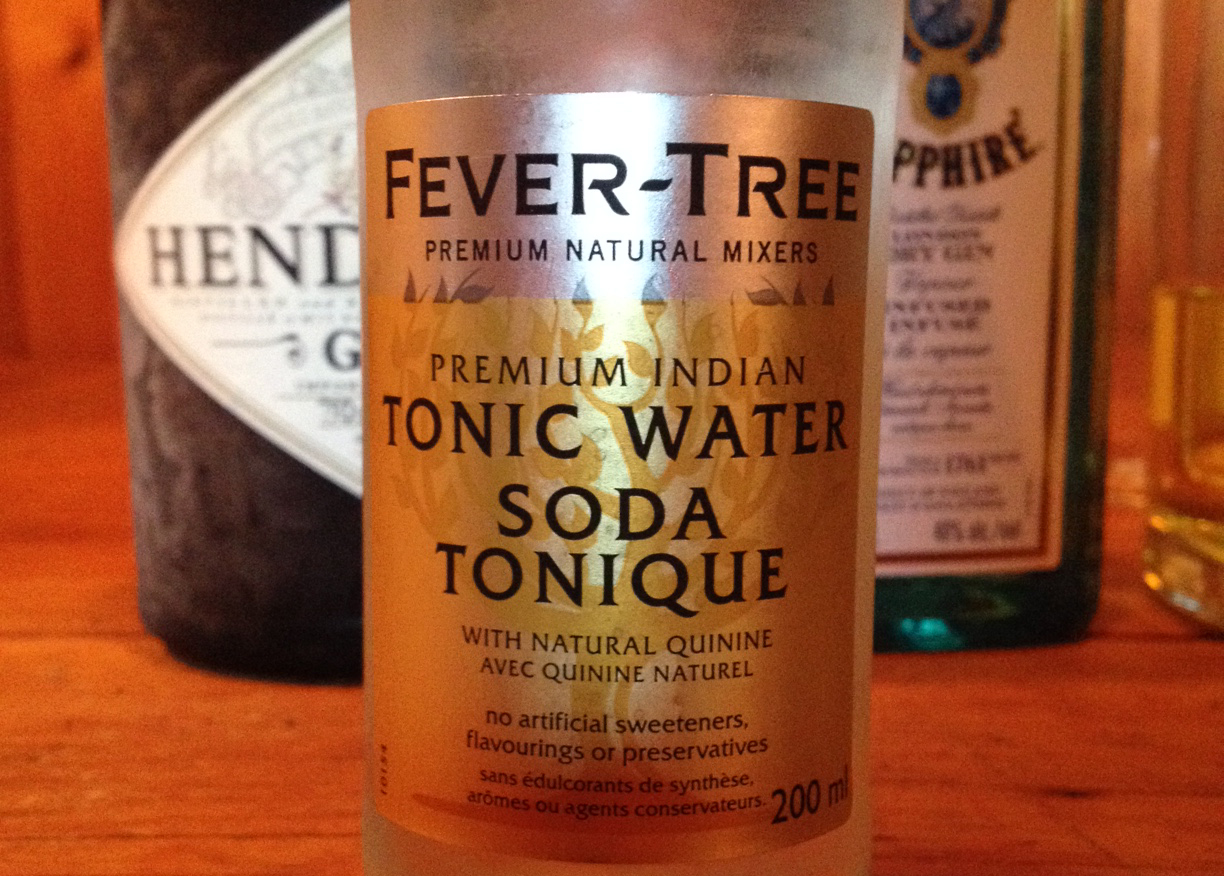
You will be interested in noting (or not at all) that cinchona is not from a native language as we might expect, but comes from the Countess of Chinchon, the wife of Peru’s Spanish Viceroy, one of the people credited with introducing the bark to Europe. That’s also why it’s sometimes referred to a countess’s powder. Feel free to impress half clad good looking people with that info at your next pool party. You’re welcome.
Insert sarcasm beers.
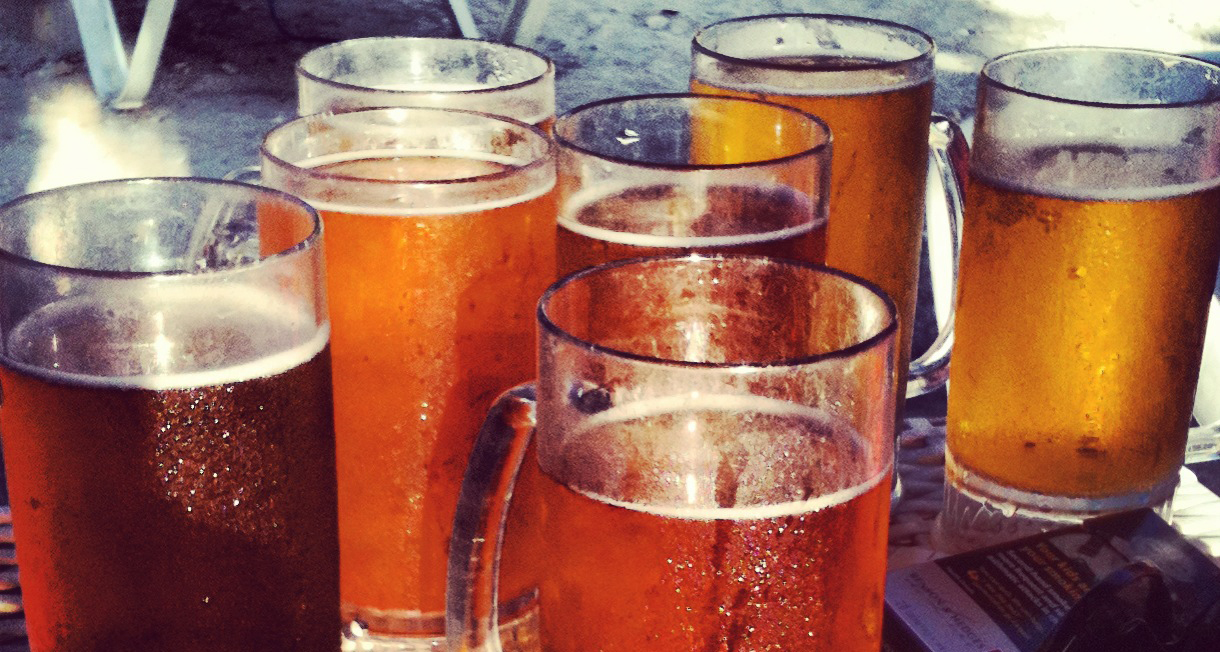
So you’re stationed somewhere hot and humid for king and country and you have this unbearably dry and bitter powder to take, and you do, because you know, life. Soon enough however the human creative genius shines forth, a bit of soda water, a bit of sugar, maybe some citrus, mix it all together and hey, it’s sort of drinkable, it sort of perks me up, it feels even… tonic. Add to that a daily gin ration should you happen to be a soldier in India (but the Navy served gin too at some point, look for a post about the Gimlet soon) and boom, for the second time in this post Bob’s your uncle. Feels quite similar to the story of the Dark and Stormy yes? Some authors are surprisingly precise about the date this happened, they specify 1825, in India, first mixed by British officers. It’s of course possible, but I would wager it would have been mere months after the introduction of all the pieces of the puzzle that people started muddling them together, probably without much fanfare. Also it’s weird because apparently tonic water was actually created as a product around 1771-1783… As the British population in India greatly increased after 1850, the demand for quinine, and G&T’s grew accordingly. That’s why you can still see some soda companies labeling their drink Indian tonic water.

Cinchona was so important to the colonial/imperialist expansion of European powers that the Brits ensured that South America would not have a monopoly on its trade. They smuggled seeds into their territories and started growing it themselves, the Dutch eventually controlled most of that trade. Even at the end of the 19th century it was recognized that without the ability to fight malaria, European imperialism would have been kept in check to some degree in the tropics. One doctor of the time said (I’m paraphrasing) that if the empire was propped up by bayonets, the hands and arms doing so could only function because of cinchona. In a similar vein Winston Churchill is quoted as saying that “The gin and tonic has saved more Englishmen’s lives, and minds, than all the doctors in the Empire.” Whooooop there it is. Today there is a lot less quinine in the drink, so you would have to drink it in multiple pints daily to have even the smallest anti malarial effect, also it means we can only guess at what the original gin and tonic tasted like.
So it is a little funny that the G&T is now widely popular in Spain, as they were frequent enemies of the British pretty much up until now. I mean the argument about Gibraltar still frequently gets heated, those two articles ( A and B ) are from last month alone. In Spanish speaking countries G&T’s, are usually just called gin-tonic, like in France, are frequently served in wide round goblets with an array of garnishes, a bit like this pic below, from the G&T bar in Panama. The wider glass is supposed to let you smell more of the garnishes and how they pair with the gin. I’m not sure my nose is that sensitive, but it was very enjoyable. BTW, sorry for the pic reuse, but I can’t fly off to exotic location every time I write a post, but wouldn’t it be neat though?

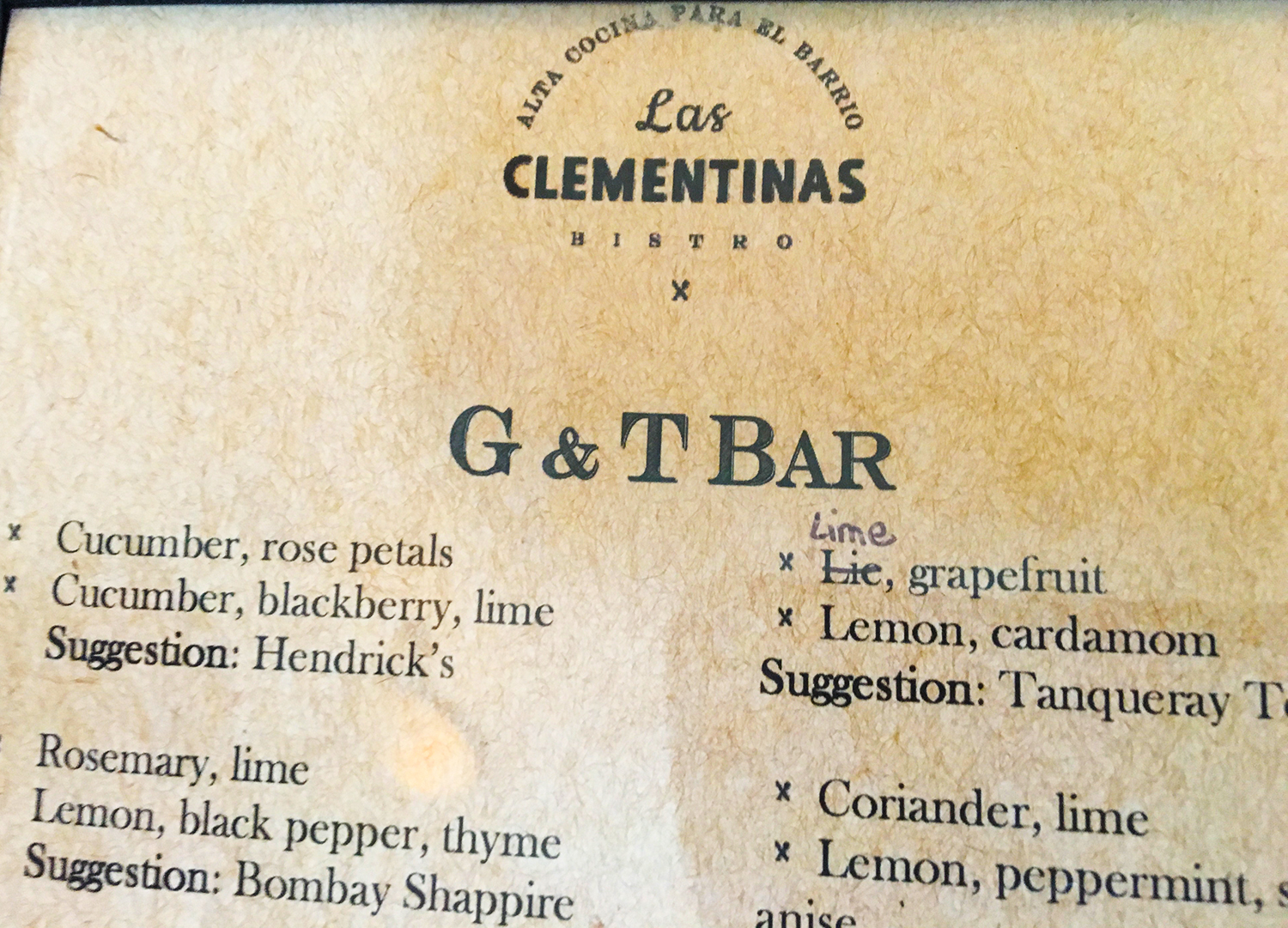
There’s been a revival of late of fancy variations of the G&T, sometimes with evocative names like the Kipling or the colonial. I think that the avalanche of premium gins and small batch tonic water plays a role in that, but there’s also, IMHO, a reaction to the over crafted cocktails of some bars. I think it’s awesome that you do a drink with your own bacon fat washed smoked bitters and unicorn powder, but I’m a fan of cocktails that can be made by anyone with ingredients that do not require traveling to Middle Earth. Grumble grumble.
As to the explosion of gin internationally, I posit a very simple reason: no aging necessary, and if I were to keep on guessing and shoot my mouth off some more, I would add that the highway robbery prices of some scotches surely pushed consumers to other spirits including gin, creating more of a demand. However, the premium gins are also something I’m unsure about (if you are starting to think I’m just a grumble factory of a man you might be on to something). One of the things that is a factor in the cost of scotch whisky, is that to call it scotch it needs to be aged a minimum of three years, (among other requirements). That’s three years of frozen investment, at least (but I still think there’s some price gouging going on). Gin on the other hand, from start to finish could probably be made in ten days, and sold right away. I see a lot of gins in fancy bottles going for over 50$ a pop, and I’m not sure they are worth it, especially not for mixing, but hey, get a couple of your buddies together, buy a bottle or two and figure it out for yourselves.
I mentioned “the fancy bar spoon pour” above. It’s simply pouring the tonic down the shaft of the bar spoon to minimize splashing against the glass and loosing some carbonation. It looks fancy but it does not seem to accomplish anything. A not representative sample of three people could not tell the difference between the spoon poured drink and the normal one, so that bar legend bites the dust.

We tried three tonics and started with the well priced and ubiquitous Schweppes, which is actually the granddaddy of all soft drinks, since it was created in 1771 (my source is here) or 1783 if you rather believe the can. At 5$ for 12 cans, you really can’t go wrong, and in fact it was the preferred mixer with Tanqueray.
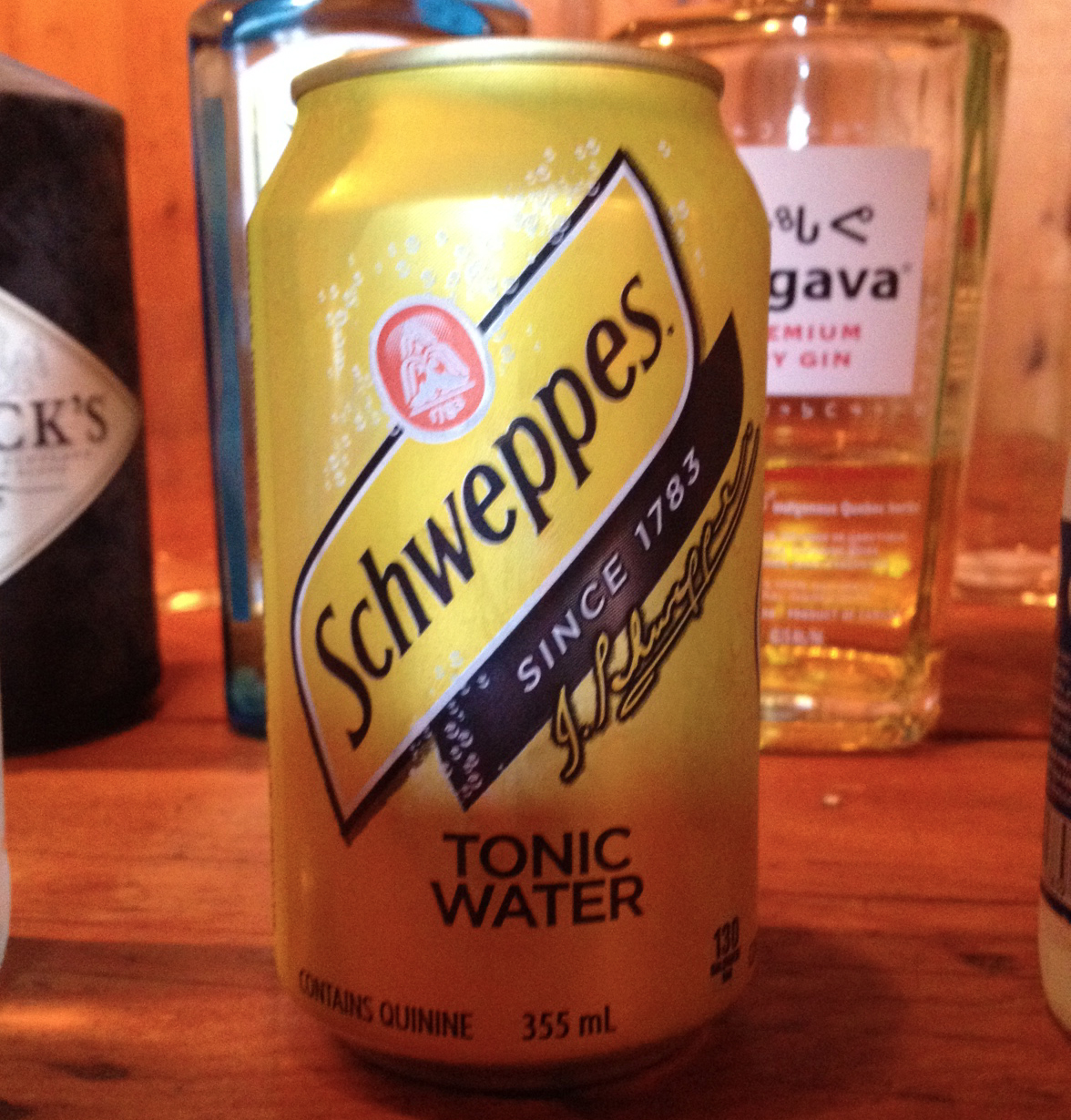
The Fever Tree tonic water was very nice as well, but more subtle, less suited to a gin with lots of bite. It is however much pricier than Schweppes. Our third contender, a local brand, was also much (much) pricier than “regular” tonic water and the taste was quite different, more on the lemon side of things and not bitter enough to our tastes.
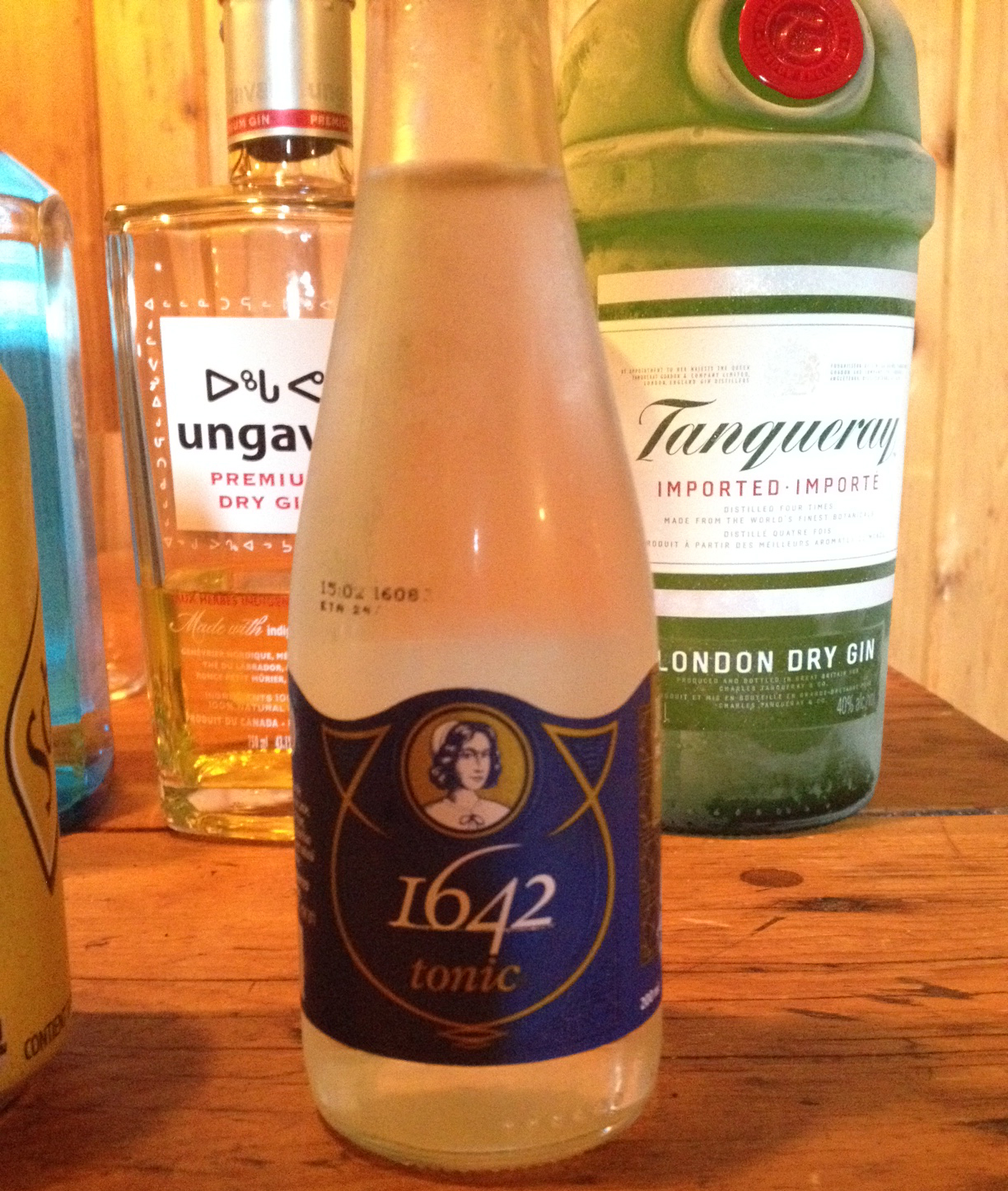
We did not try all the combinations of all the gins and all the tonics, and not even how adding bitters changed things. It was a Monday night after all and some of us were driving. You will have to run some of the tests on your own, feel free to invite me.
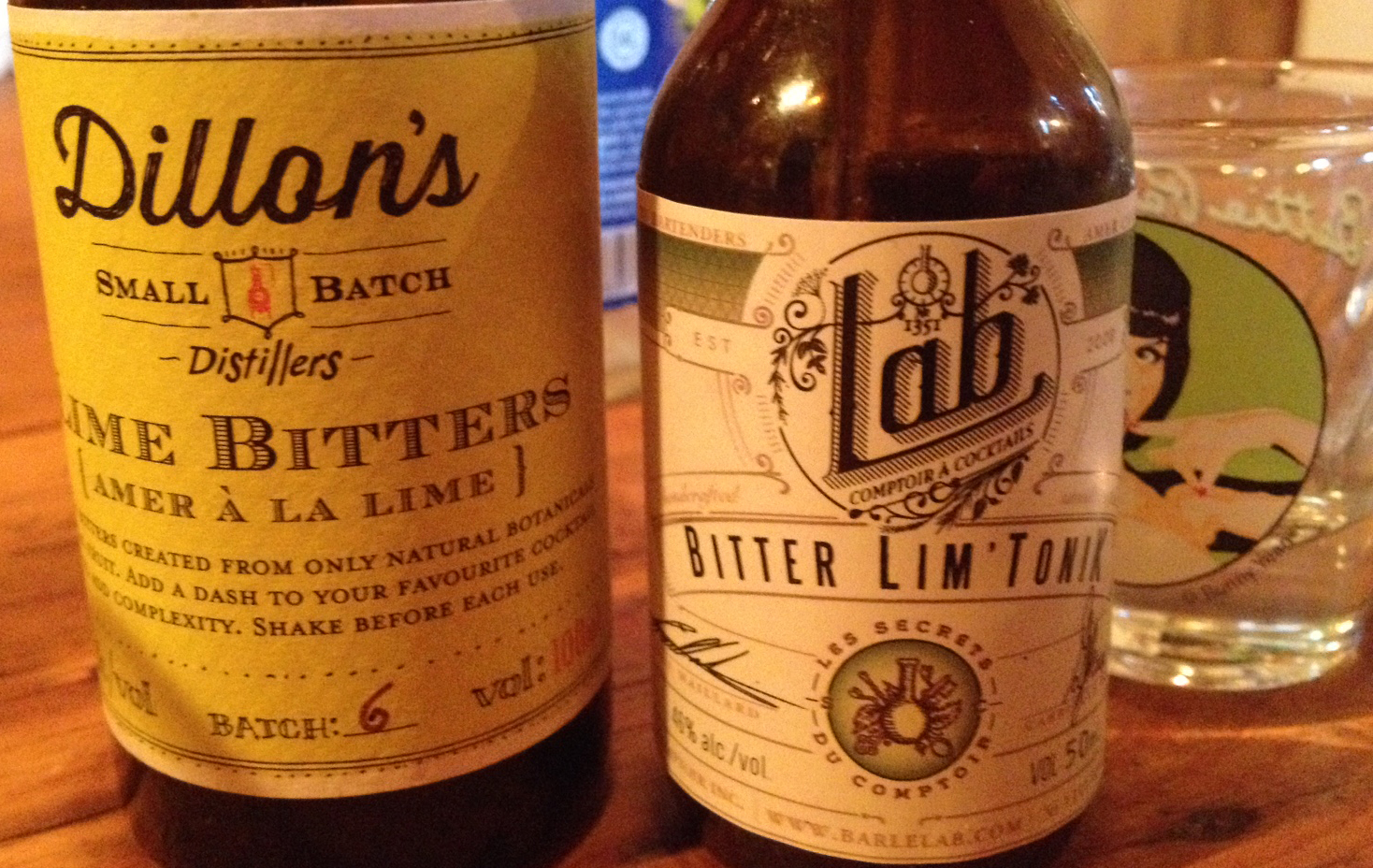
In the meantime I’ll have to continue testing on my own.
Now for the (very short and toned down) defiance section of this long winded post…
Recent family events (all is good but there were sweaty moments) have underscored how precarious our trip on this little blue marble is, and that the one thing you really can’t buy more of is time. It’s thus best to use it well.
Specifically I’m thinking how we all put up with a lot of social obligational fuckery, and that instead of going out to have supper with some people you don’t really care about, you should probably stay home and have a Gin & Tonic. Trust me, your time here is basically short and it goes by quick. The evenings in your life are counted, and the number is getting smaller and smaller. Try not to waste them on overtime you don’t need or people you don’t want at your funeral (or to whose funeral you would only go to under duress). Surely there’s a polite way to tell them to bugger off, that you’re otherwise engaged. Forever.
Will this attitude cost you? No doubt. Will there be consequences? Of course. People will get mad, and maybe you won’t (or will, you never know) get that promotion/indoor parking spot. On the bright side it will weed out the phonies, and of course your real friends won’t invite you to a dog show in the first place or be insulted if you decline. As for the politics of work, being true to yourself might pay off more than being a lackey, or it might get you fired, never know. To once more paraphrase Ash, from the Evil Dead series, I know jackshit and Jack just left town.
You choose what is most valuable to you, I’ll stick with my little defiance and a G&T.
Tip of the hat.

Jack Shit seems like a pretty cool guy. Sound advice, my friend!